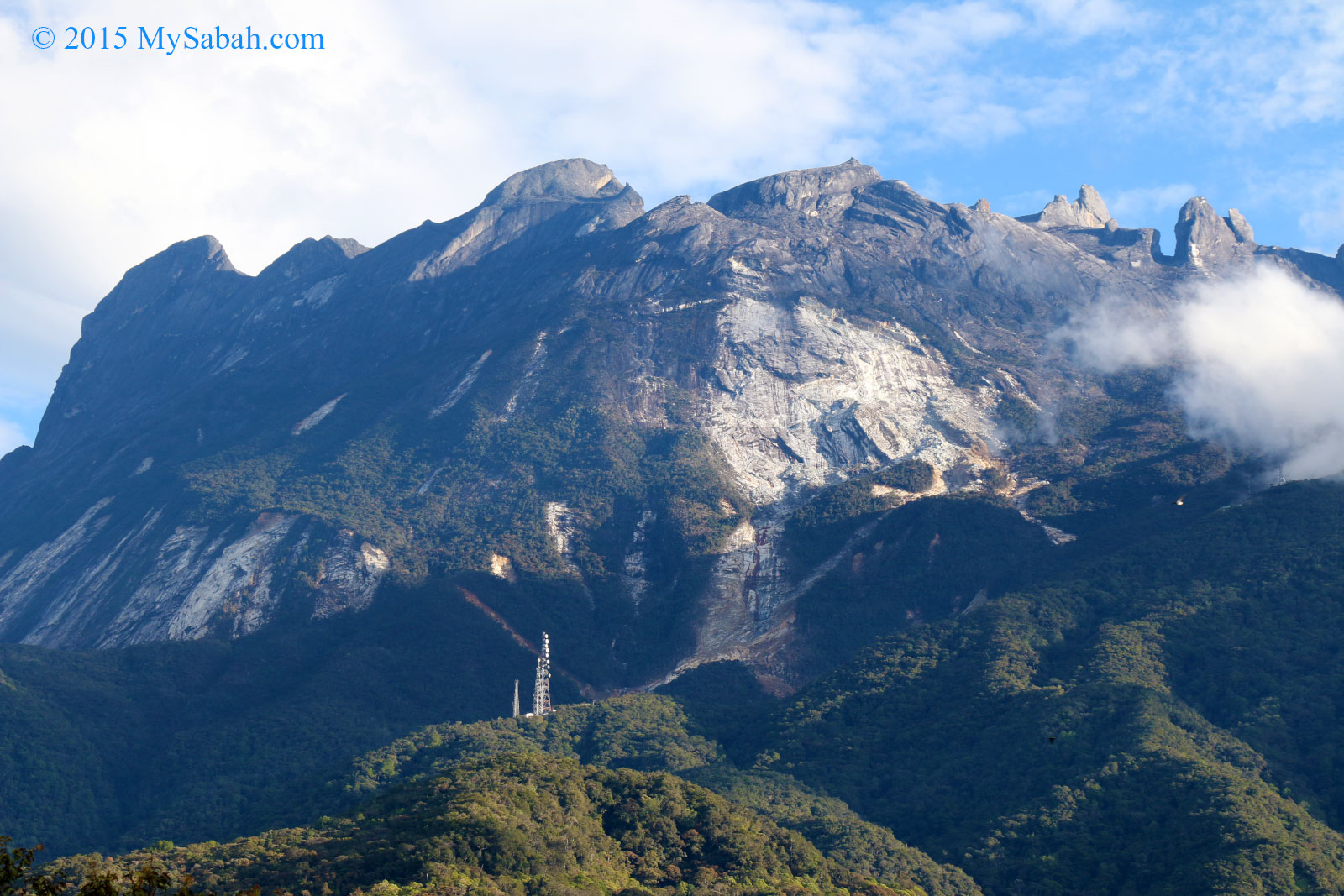Mount Kinabalu is a mountain in Sabah, Malaysia. It is protected as Kinabalu
Park, a World Heritage Site. Kinabalu is the highest peak in Borneo's Crocker
Range and is the highest mountain in the Malay Archipelago as well as the
highest mountain in Malaysia. Mount Kinabalu is also the 20th most prominent
mountain in the world by topographic prominence.
In 1997, a re-survey using satellite technology established its summit
(known as Low's Peak) height at 4,095 metres (13,435 ft) above sea level,
which is some 6 metres (20 ft) less than the previously thought and
hitherto published figure of 4,101 metres (13,455 ft).
Mount Kinabalu includes the Kinabalu montane alpine meadows ecoregion
in the montane grasslands and shrublands biome. The mountain and its
surroundings are among the most important biological sites in the world, with
between 5,000 and 6,000 species of plants, 326 species of birds, and more than
100 mammalian species identified. Among this rich collection of wildlife are
famous species such as the gigantic Rafflesia plants and orangutans.
Mount Kinabalu has been accorded UNESCO World Heritage status.
Low's Peak can be climbed quite easily by a person in good physical
condition and there is no need for mountaineering equipment at any point on the
main route. Other peaks along the massif, however, require rock climbing
skills.
Biology
Mount Kinabalu along with other upland areas of the Crocker Range is known worldwide for its botanical and biological species diversity with plants of Himalayan, Australasian, and Indomalayan origin. A recent botanical survey of the mountain estimated a
staggering 5,000 to 6,000 plant species (excluding mosses and liverworts
but including ferns),
which is more than all of Europe and North America (excluding tropical
regions of Mexico) combined. It is therefore one of the world's most
important biological sites.
In 2015, a major Malaysian-Dutch study showed that the unique flora,
fauna, and fungi on the mountain summit are younger than the mountain
itself, and have evolved from both local and distant montane ancestors.
History
British colonial administrator Hugh Low
made the first recorded ascent of Mount Kinabalu's summit plateau in
March 1851. Low did not scale the mountain's highest peak, however,
considering it "inaccessible to any but winged animals". In April and July 1858, Low was accompanied on two further ascents by Spenser St. John, the British Consul in Brunei. The highest point of Mount Kinabalu was finally reached in 1888 by zoologist John Whitehead.British botanist Lilian Gibbs became the first woman and the first botanist to summit Mount Kinabalu in February 1910.
Botanist E.J.H Corner led two important expeditions of the Royal Society of Great Britain to the mountain in 1961 and 1964. Kinabalu National Park was established in 1964. The park was designated a natural World Heritage Site in 2000.
Source taken from:
https://en.wikipedia.org/wiki/Mount_Kinabalu
http://www.mysabah.com/wordpress/wp-content/uploads/2015/06/20120910_36.jpg

No comments:
Post a Comment